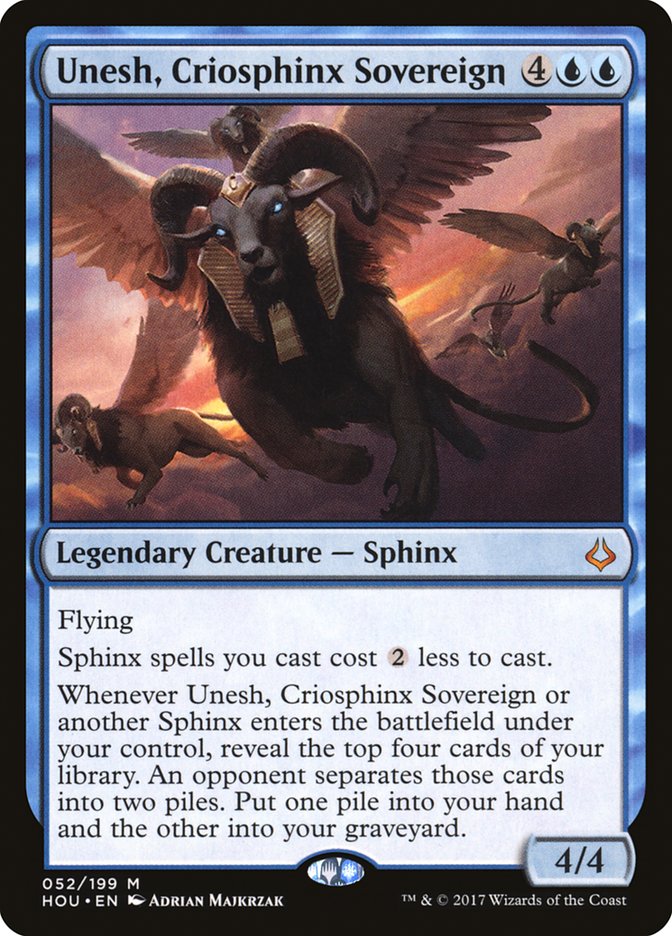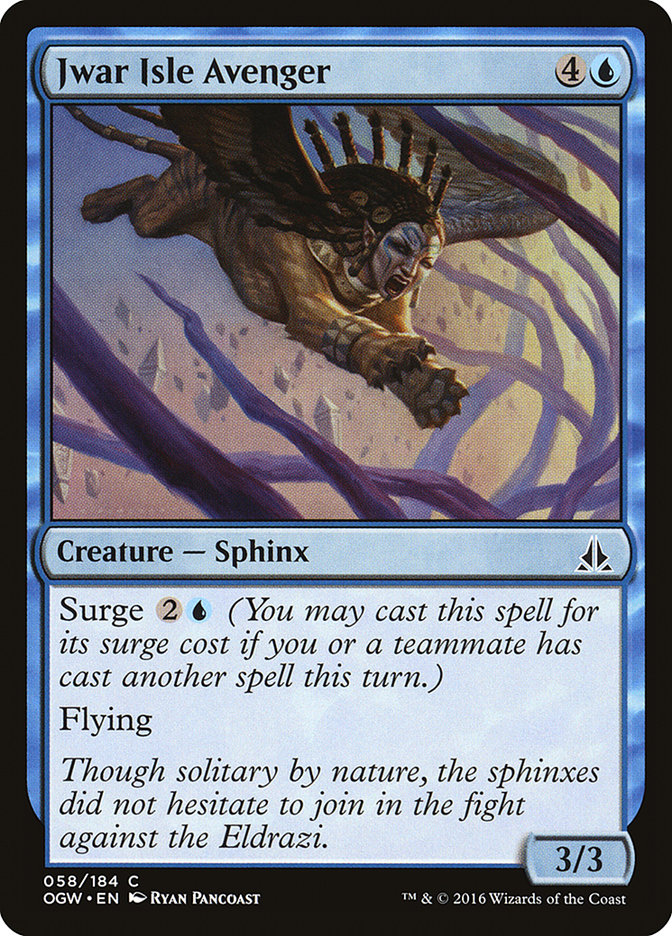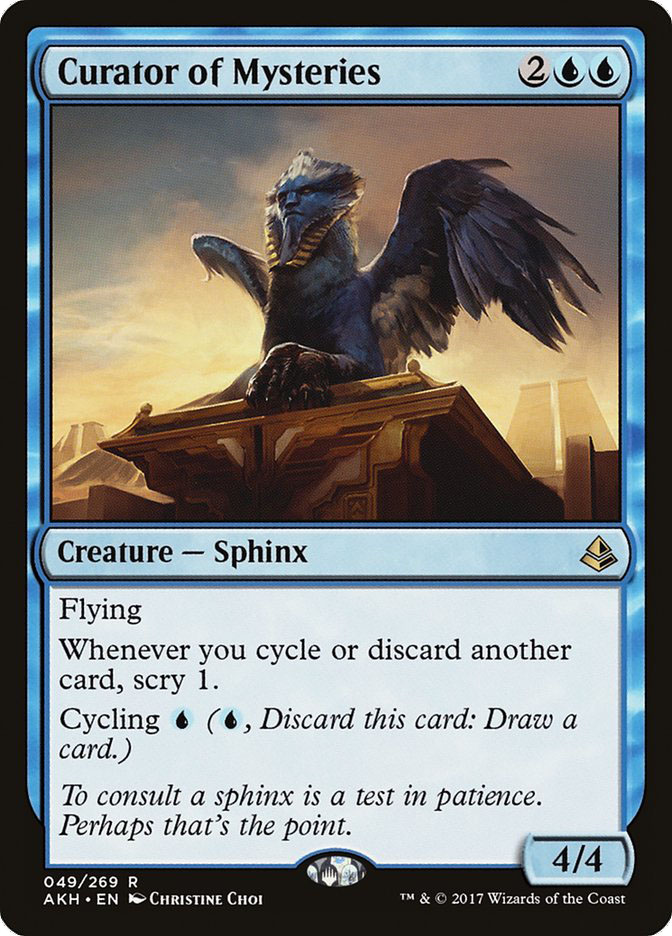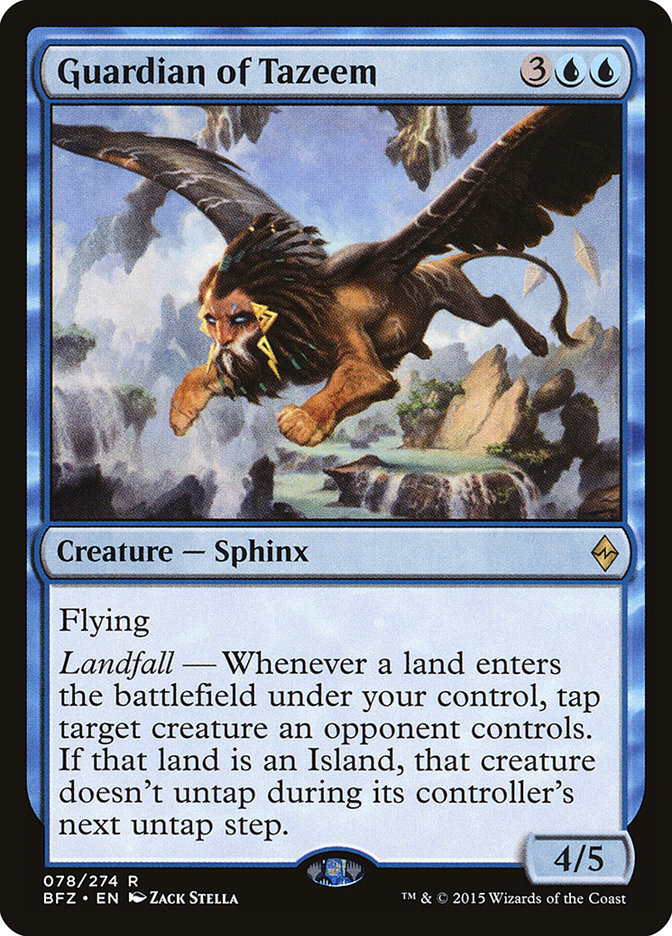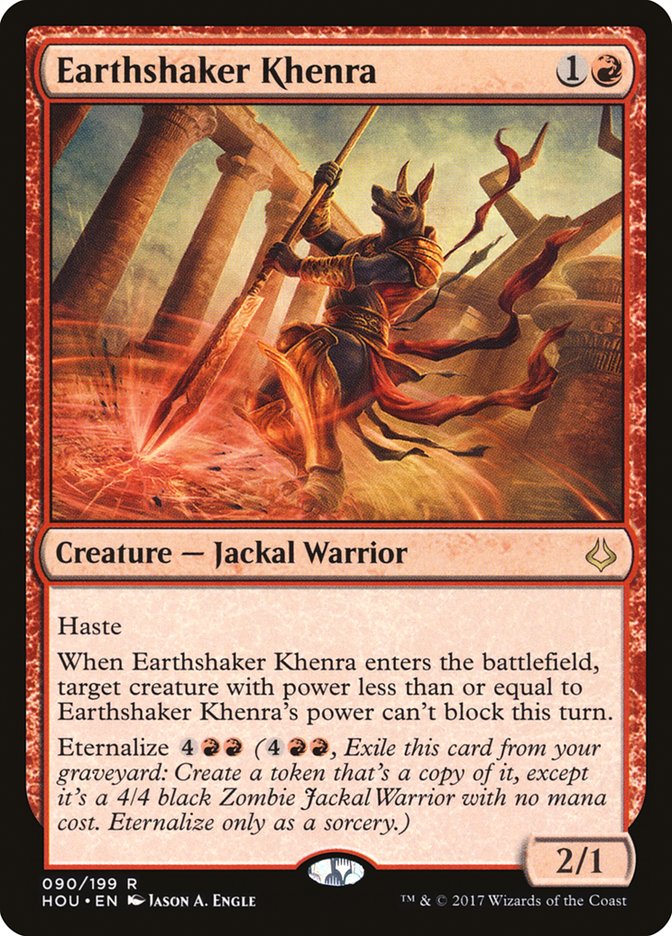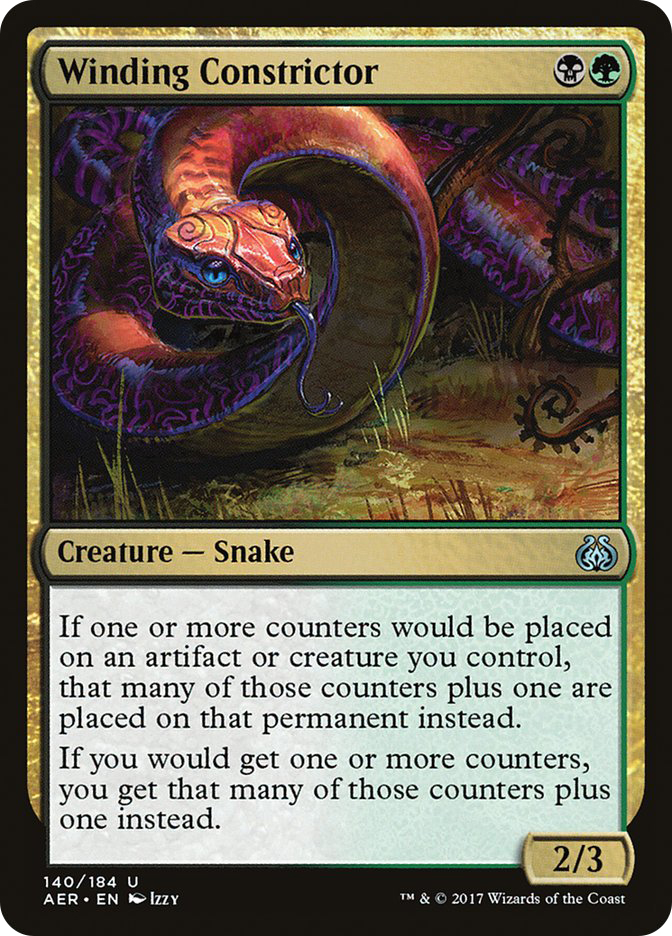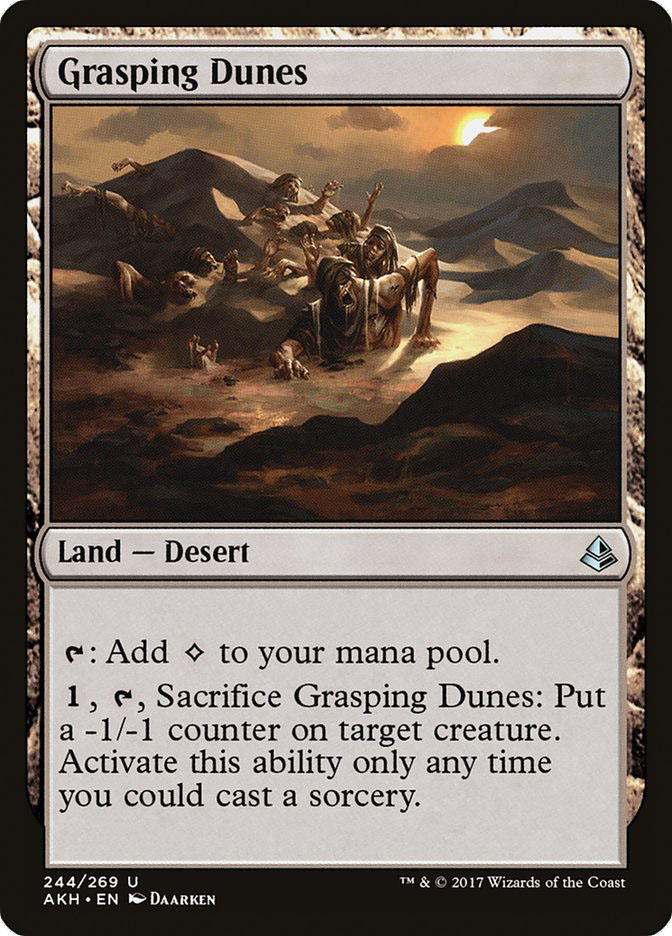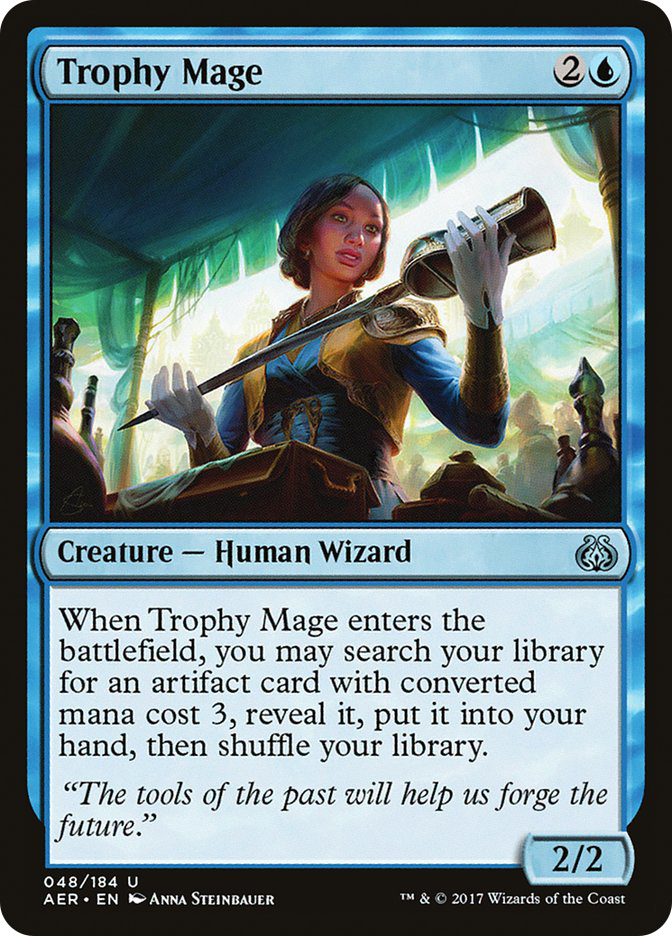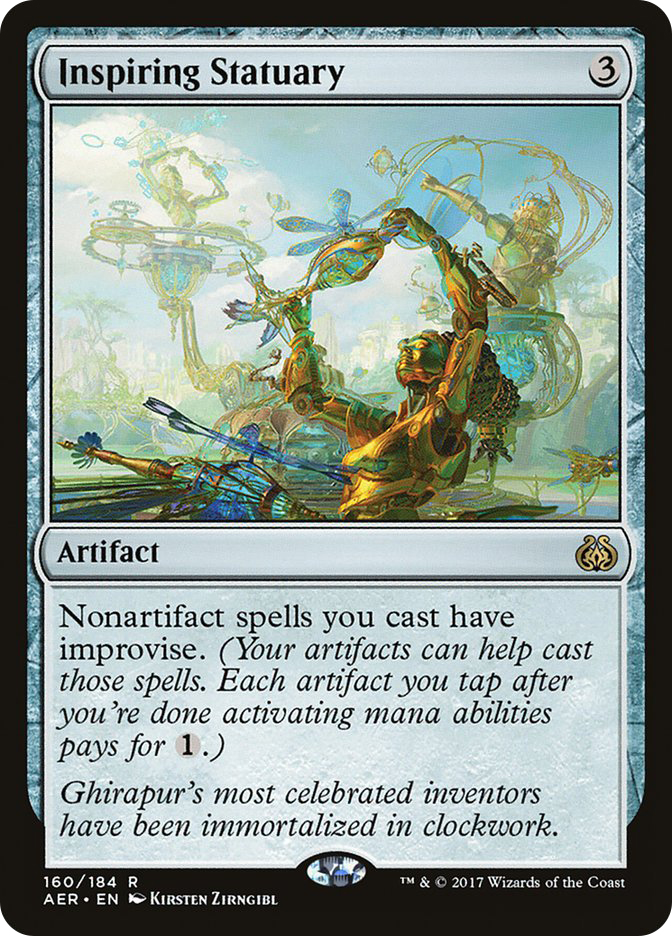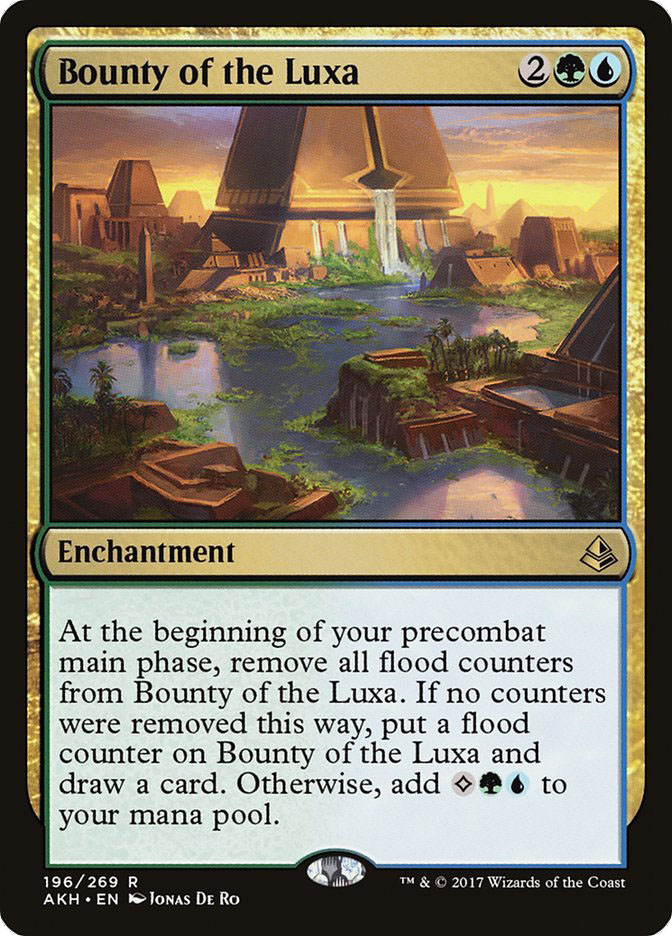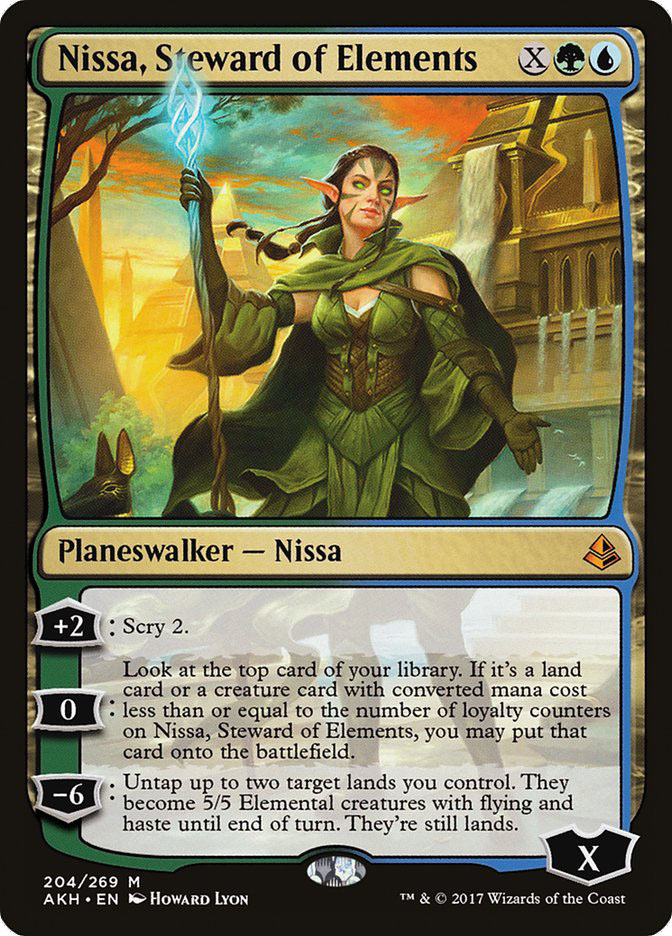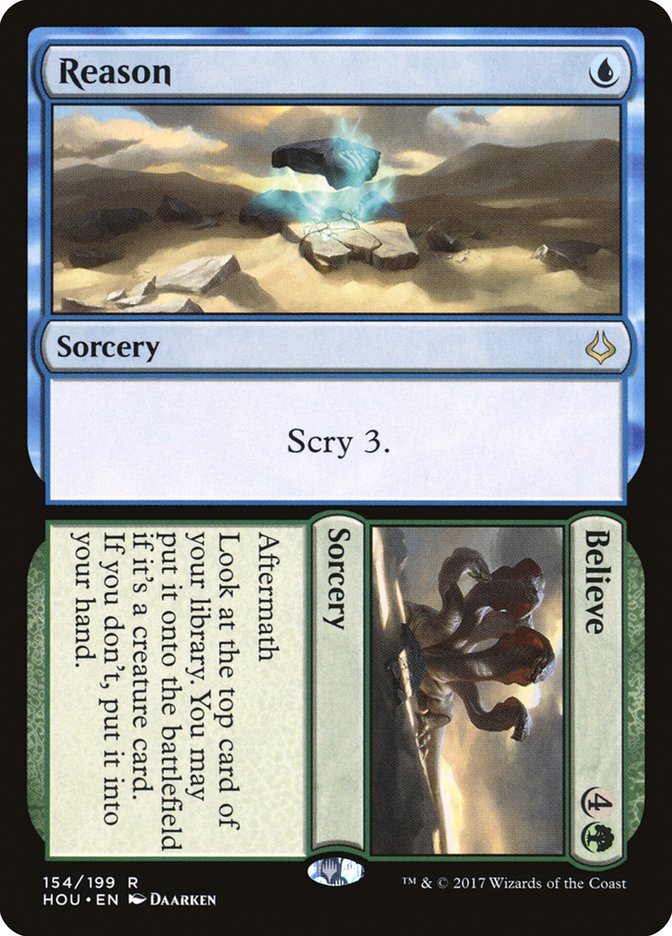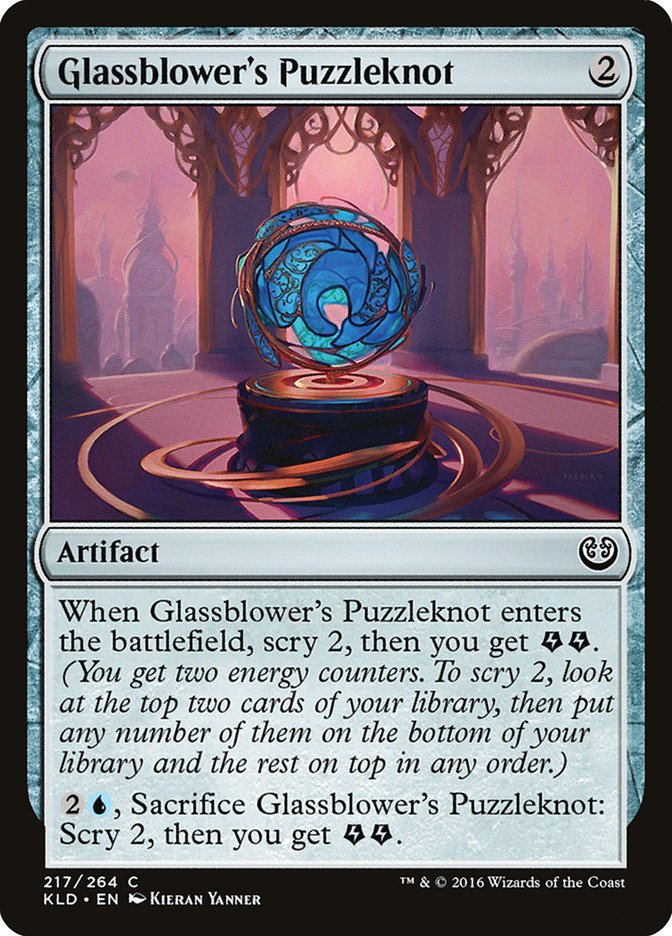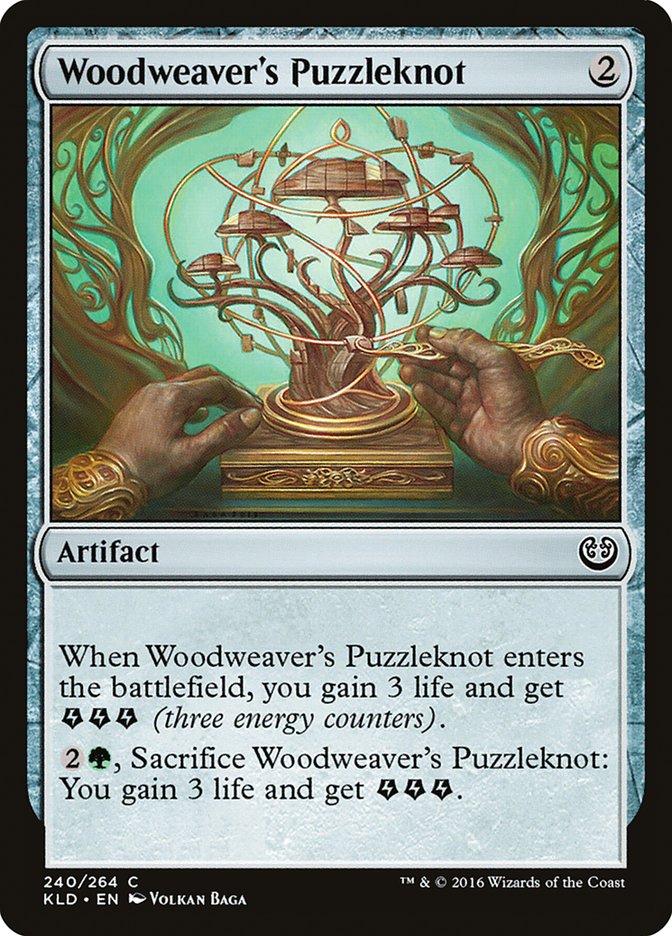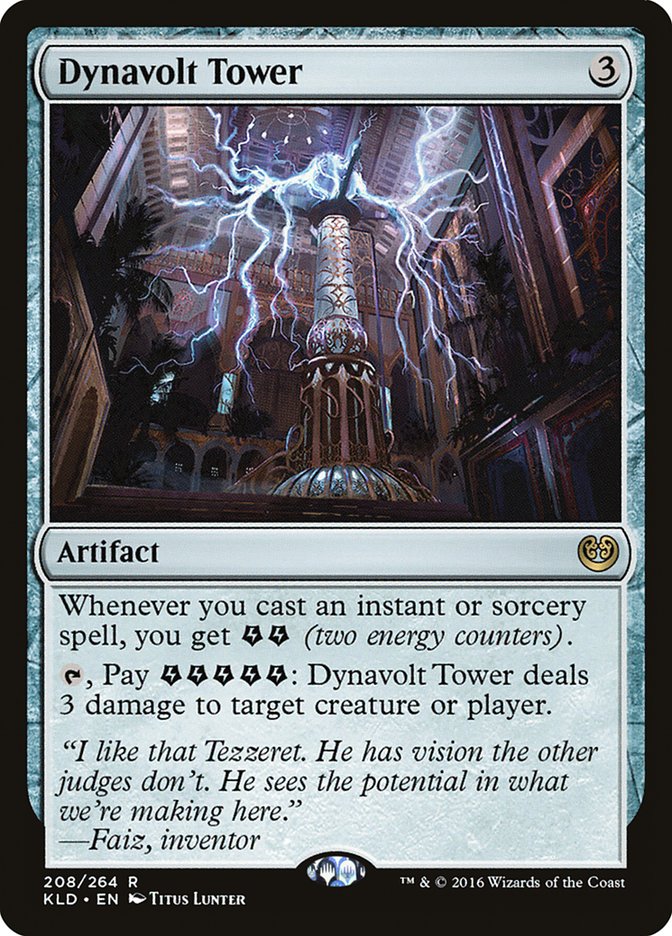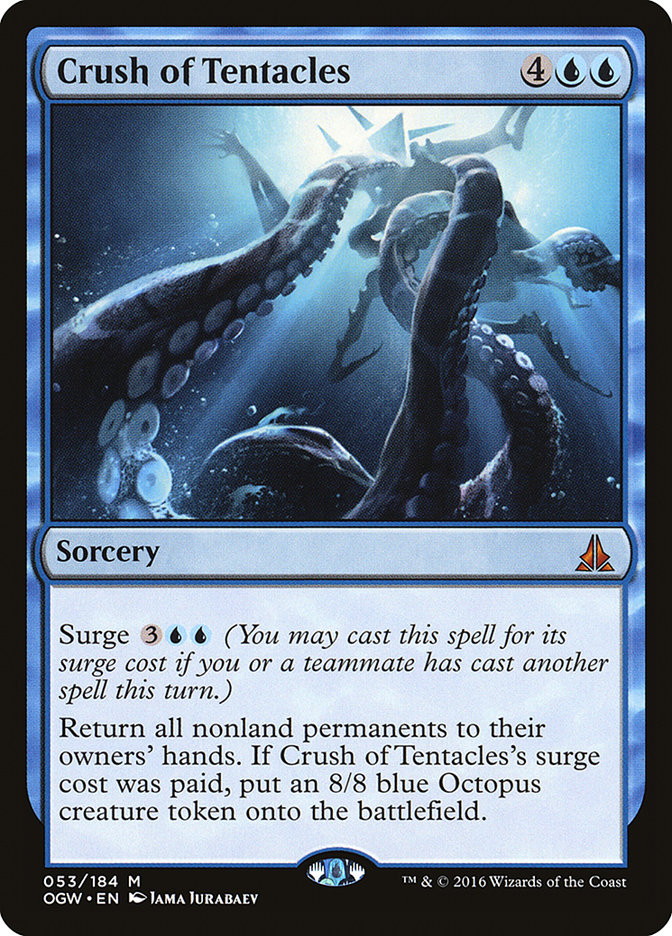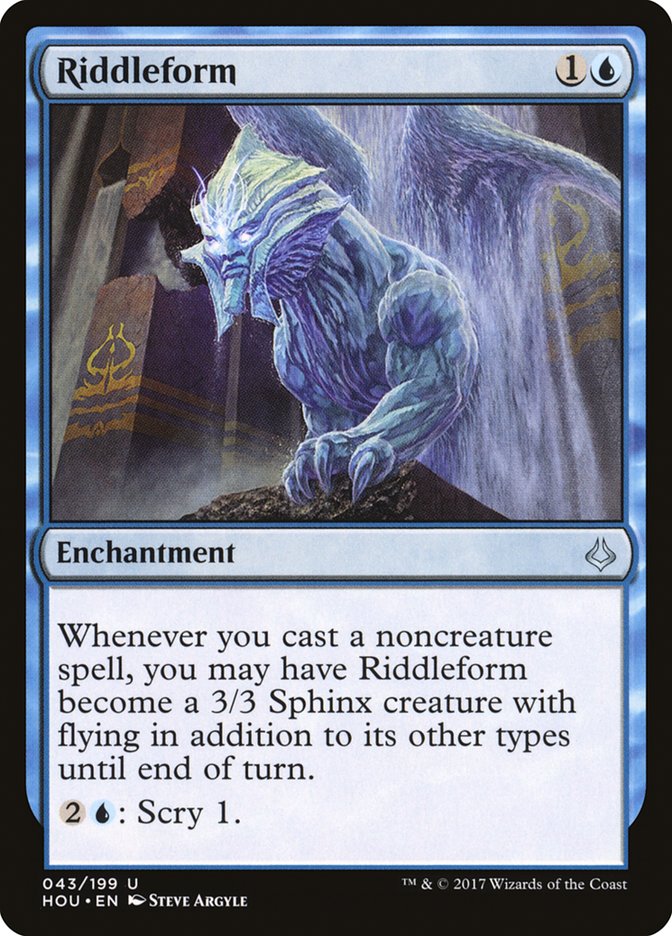It doesn’t matter how long you’ve been playing Magic; there’s just no beating the feeling of playing a sixth land, tapping everything you’ve got, and slamming something that has an impact right away.
The Titan cycle and its design brought this concept to modern Magic. Tapping six mana and getting a repeatable effect became the definition of a solid, top-end creature, both in Standard and Commander. If you were spending that much mana, you had to be doing something big with it.
That set of five creatures hasn’t been legal in Standard for several years, but occasionally, we get a big creature that has a similar kind of thunderous impact on the battlefield and the format.
Am I building it up enough?
Okay, well, Unesh, Criosphinx Sovereign isn’t a Titan. It’s not even a Frost Titan. But this least expensive mythic of Hour of Devastation is a fun build-around that provides a couple of opportunities for fun in this Standard environment where, honestly, anything goes.
No one ever got worked up over an Air Elemental that cost one more, but we’ll see what we can do. The way I see it, Unesh, Criosphinx Sovereign is the top-end of two different decks. Its trigger isn’t enough, in my opinion, to play it, especially because it doesn’t do anything to impact the battlefield like Frost Titan did. If you’re getting beat down, you could have all the cards in your hand you need and still end up biting the dust a turn later.
So we’re going to need some Sphinxes, and lots of ’em.
Jwar Isle Avenger, if you cast it on the same turn as Unesh, Criosphinx Sovereign, costs a single blue mana and has a great trigger. What’s otherwise an unassuming vanilla 3/3 flyer now has real teeth. With two triggers like that, you’re looking at sculpting a hand that can answer about anything. Curator of Mysteries is easily cycled if you’re not ready to head into the ring. Guardian of Tazeem, which itself has seen some reasonable sideboard play in its long tenure in Standard, has a powerful Island interaction that works well with what would likely be a mono-blue deck.
Casting a bunch of expensive flyers seems like a plan in…
Oh yeah…other people play Magic, too. No matter; we’ll still be able to compete with other decks, too. Removal can be had in blue (or colorless, as we’ll be doing in this instance), so the conditional, reactionary removal normally available is firmly supplemented by more permanent solutions.
Unesh, Criosphinx Sovereign rules the skies of the post-Bolas Amonkhet, but what does a set of spells to support it look like?
Creatures (14)
- 4 Curator of Mysteries
- 4 Vizier of Tumbling Sands
- 4 Unesh, Criosphinx Sovereign
- 2 Nimble Obstructionist
Lands (24)
Spells (22)

You know how they say that cooking is art, and baking is a science? Building, testing, and revising this deck was like making a three-layer cake, not a perfectly grilled steak.
For this deck to function, it had to have the right combination of interactive elements, cycling spells, and cards that gave inevitability. In some instances, these combinations had particular cards that overlapped functions (Countervailing Winds, Vizier of Tumbling Sands) and some were utilitarian concessions (Spatial Contortion). Two nonland permanents really help support the creature base: Abandoned Sarcophagus and Drake Haven.
Abandoned Sarcophagus is a card that I didn’t fully understand when it was first revealed late in the Hour of Devastation preview season. Basically, you can cycle cards normally. You can even cast those cards after cycling. However, if you cast them from the graveyard, they live only on the stack, and if they’re a permanent that’s destroyed, they become exiled. It feels a little like the recover mechanic from Coldsnap, requiring additionally utilization immediately or forgoing long-term benefit.
Abandoned Sarcophagus has several applications in Standard and its playable is determined almost completely by your ability to leverage cycled cards. My favorite interaction is Hollow One, which, of cycled, counts itself when discarded, so Hollow One can be an efficient cantrip on a decent body. Plus, any cycled creature you cast from the graveyard triggers Prized Amalgam? Right, Sphinxes.
Drake Haven was a Limited all-star in Amonkhet‘s Draft format, and it’s easy to see why. Making “free” Wind Drakes based on the format’s most defining returning mechanic is a good way to make life hard for your opponent. Here, especially with the added incentive to cycle cards, you can make your own army if the Sphinx plan isn’t coming together or you just need ways to trade for your opponent’s 3/2.
This deck, in my opinion, had to be designed this way: two parts this, four parts this, skip the fat, sprinkle in three sources of colorless mana, and voila! You’ve got a deck that has consistency, teeth, and a fun finisher.
Normal cycling deck finishers include something hard to target or effectively answer, like Torrential Gearhulk or New Perspectives, but the continual advantage and inevitability of continually recasting discarded threats like Curator of Mysteries keeps a reasonable amount of pressure on your opponent.
I’m also a big fan of Grasping Dunes in testing. While not the old-school card Desert itself, this is a reasonable removal spell early on. It picks off Selfless Spirit painlessly, as well as an Earthshaker Khenra. Even if it shrinks something down to Spatial Contortion or Warping Wail size, you’re fine to do that. Your deck is designed to be efficient and chock-full of lands and other interactive spells that won’t stress your manabase. If sacrificing a land means you’re not getting beaten down by an X/1, that’s reasonable to me.
While this deck did function, it was a bit bland; it was well-executed, but it had no soul. The deck’s linear profile and disposition meant that certain matchups were fine, while others were unwinnable. Unesh, Criosphinx Sovereign’s enters-the-battlefield trigger wasn’t that great, but casting three Curator of Mysteries in one turn was incredible. I couldn’t see myself playing it even at a local FNM, though, as the flavor of the deck was just not really doing it for me.
Time to reach for the spices.
With sufficient leveraging, Inspiring Statuary might be a more reliable, proactive, and interactive way to cast and recast Sphinxes in bulk.
Green had a lot going for it, not only because of the ramp potential, but also because many of its spells have the potential to benefit from the generic mana requirement that a few artifacts could provide.
An energy subtheme, which would cost the deck nearly nothing, would allow Aether Hub to be a no-strings-attached multicolor land, making the deck more consistent and allowing for alternative win conditions like Dynavolt Tower.
With all this scrying, it almost makes me wish that Aetherworks Marvel. Almost.
With a blue and green plan, we’re heading a different direction, but the end result is the same: powerful Sphinxes with enough finishing potential to close the game.
Creatures (10)
Planeswalkers (2)
Lands (21)
Spells (27)

This deck played completely differently, and it’s a good thing; I haven’t seen this much library manipulation in Standard in, like, forever.
Have you cast Reason // Believe yet? It can make an unkeepable hand outstanding! On the back end, you’re looking at the potential of hitting a very powerful creature on-curve or even ahead of it. With sufficient ramp, you can even get there before you run out of scrying range (you have to hit on the third draw step from then, meaning you’ll need to do it in two turns, which is a tall order.) Much like See the Unwritten, you can also pay six, take a decent chance at hitting something, and set up your draw after that. Attune with Aether and Spring // Mind let you play a lower land count to allow you plenty of room for other cards. I’ve found that a set of Attune with Aether (and its ilk, like Traverse the Ulvenwald) will let me shave about two lands, but my manabase usually needs to have more basics to compensate.
Trophy Mage has three potential targets: Inspiring Statuary, Kefnet’s Monument, and Dynavolt Tower, each of which will depend on where you are battlefield-wise. If you have plenty of artifacts, Inspiring Statuary is your best choice. If you’re flush on energy and looking for a way to break the stalemate, Dynavolt Tower can churn out some punishment. If you’re behind and need to stabilize, Kefnet’s Monument can keep a critical threat locked down while still providing an avenue for the next step. Cast it turn 4, follow up with Guardian of Tazeem turn 5, and drop an Island. All the tapping.
Spring’s role is obvious, and it allows you to seamlessly hop to five mana to cast one of your lesser Sphinxes. If you’ve already got mana, Spring finds you another Island for more tapping, and Mind is easy to cast if you tap some artifacts to help. It’s Reverse Engineer without the sorcery hassle!
The deck is much lighter on interaction, but it makes up for it in sheer consistency in lifegain, ease of casting its spells, and card selection. You can always put your hands on threats, lands, or the utility cards you need to stay in the game.
This is about the best new deck I can think of that uses Crush of Tentacles, especially in congress with Bounty of the Luxa. Turn 4, Bounty. Turn 5, remove no flood counters, go up to seven mana, draw a card, and then cast a Puzzleknot and bounce everything, including your flooded Bounty of the Luxa, and get an 8/8. Brutal! Recast all your Puzzleknots again for value!
Nissa, Steward of Elements benefits from all of the deck’s scrying and card selection, and if you’re flush with artifacts and mana, you can make a gargantuan, game-ending pair of 5/5 lands with her. Crush of Tentacles can clear the path. You can recast everything. Then, once you’re ready, fire off the Nissa lasers!
This deck felt less like a Sphinx deck as the previous one, but it played better and more proactively. It felt like there were decisions to make; searching your library and scrying don’t usually go together, but the information the scry provides is invaluable when planning your next steps. It makes a huge difference to know what’s coming up next.
Both decks are fun; the first is more clinical, with its efficiency through library sifting and end-game inevitability, but the second is splashier, plays some underutilized green and blue cards, and ultimately has a more thunderous finish, win or lose. Gonna have to give it to deck #2.
Unesh, Criosphinx Sovereign, and its implication for the dubious Sphinx tribal create a scenario that few people ever thought would exist. Sharuum, the Hegemon has an on-color cost reducer? What will Magic think of next?
As a sidenote, this is saying nothing of Riddleform, the format’s best Sphinx…
Is there another underused mythic in Hour of Devastation that’s piqued your interest?





